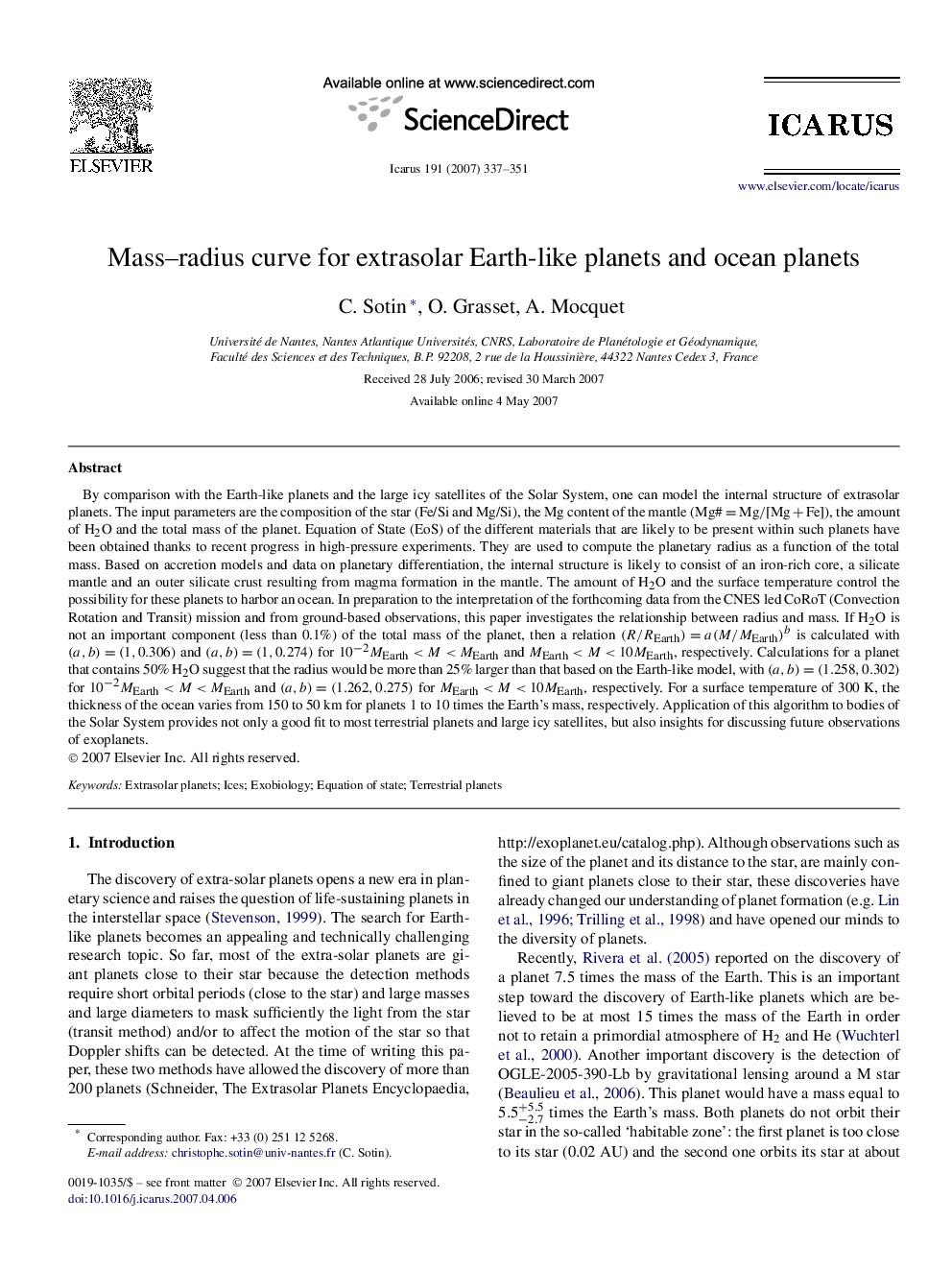| کد مقاله | کد نشریه | سال انتشار | مقاله انگلیسی | نسخه تمام متن |
|---|---|---|---|---|
| 1775221 | 1021187 | 2007 | 15 صفحه PDF | دانلود رایگان |

By comparison with the Earth-like planets and the large icy satellites of the Solar System, one can model the internal structure of extrasolar planets. The input parameters are the composition of the star (Fe/Si and Mg/Si), the Mg content of the mantle (Mg# = Mg/[Mg + Fe]), the amount of H2O and the total mass of the planet. Equation of State (EoS) of the different materials that are likely to be present within such planets have been obtained thanks to recent progress in high-pressure experiments. They are used to compute the planetary radius as a function of the total mass. Based on accretion models and data on planetary differentiation, the internal structure is likely to consist of an iron-rich core, a silicate mantle and an outer silicate crust resulting from magma formation in the mantle. The amount of H2O and the surface temperature control the possibility for these planets to harbor an ocean. In preparation to the interpretation of the forthcoming data from the CNES led CoRoT (Convection Rotation and Transit) mission and from ground-based observations, this paper investigates the relationship between radius and mass. If H2O is not an important component (less than 0.1%) of the total mass of the planet, then a relation (R/REarth)=ab(M/MEarth)(R/REarth)=a(M/MEarth)b is calculated with (a,b)=(1,0.306)(a,b)=(1,0.306) and (a,b)=(1,0.274)(a,b)=(1,0.274) for 10−2MEarth
Journal: Icarus - Volume 191, Issue 1, 1 November 2007, Pages 337–351